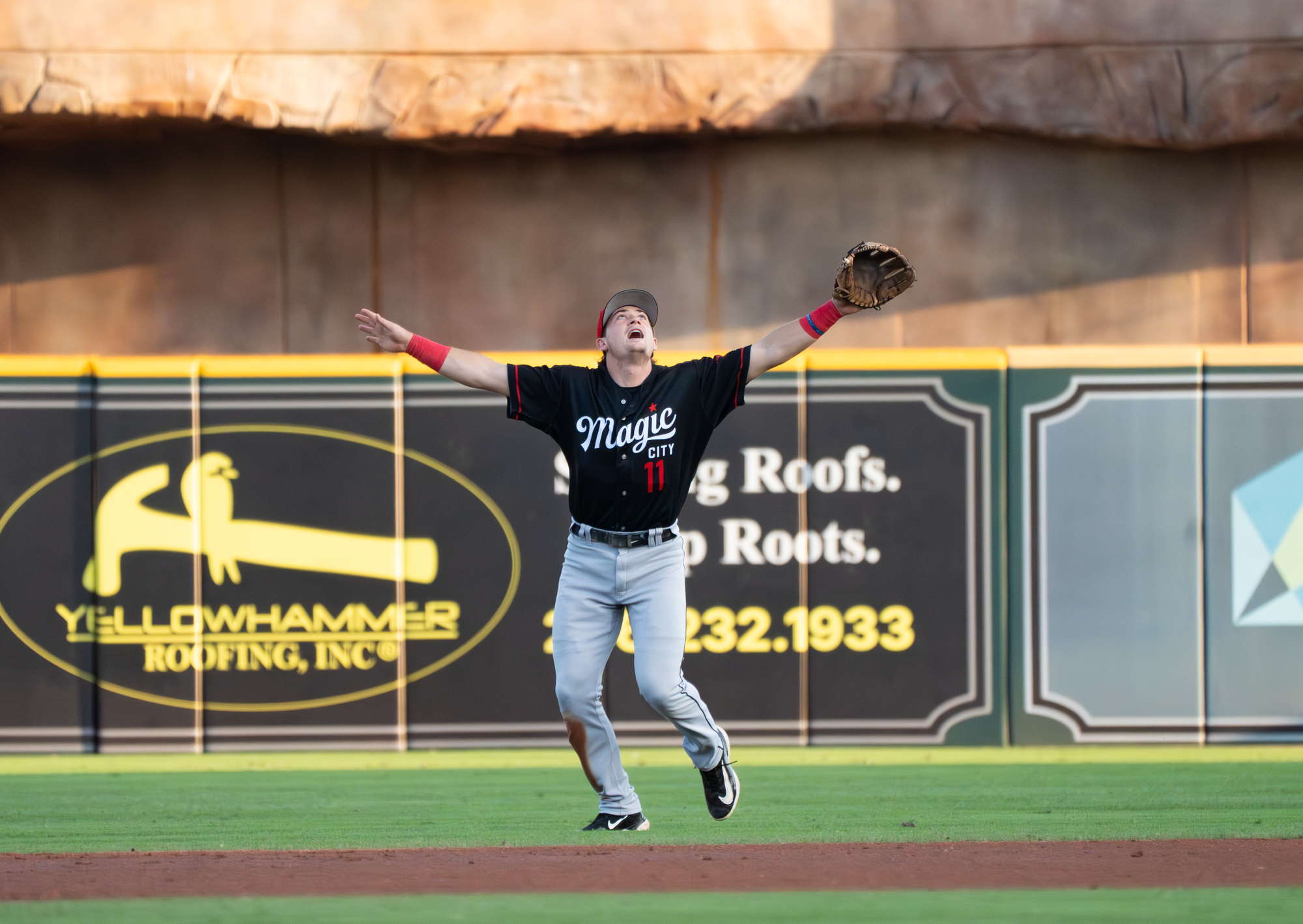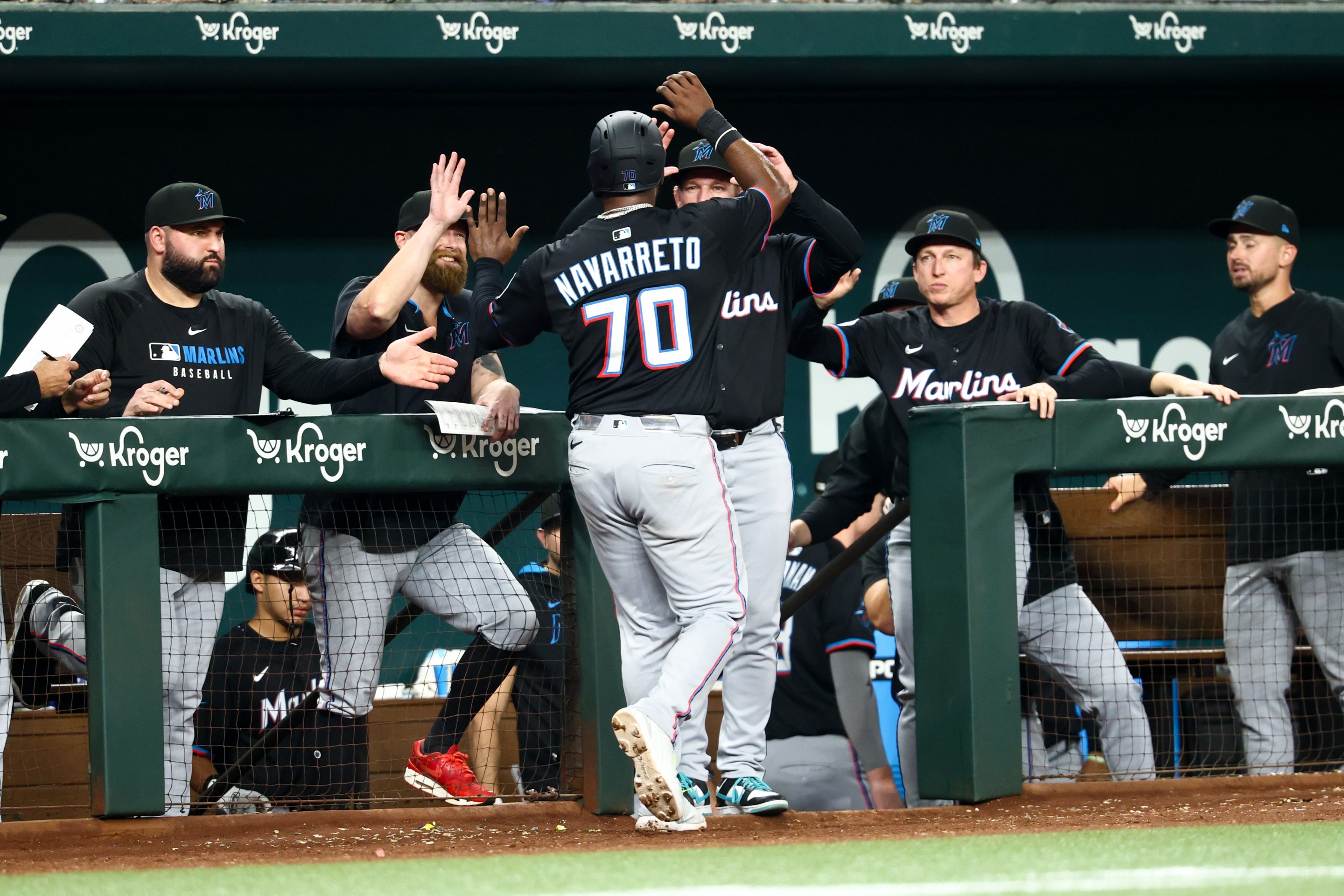Over the first three installments of Prospect Week, the evaluations of those 26 White Sox prospects included a catch or caveat. The first group of players were too young or distant from the majors to tell heads from tails, the second group just got here, and the third had injuries that altered the course of their 2024 seasons enough to carry lingering questions into 2025.
The next group of White Sox prospects all managed to meet or exceed expectations over the course of the 2024 season. Past performance doesn't necessarily guarantee future results, because last year's crop included Jacob Burke and Adam Hackenberg, who'd be in the opposite category this time around if we decided to be real jerks about guys making $30,000 salaries while trying their best. Then again, last year's group also included Brooks Baldwin and Mason Adams, who played their way onto the radar a year before they impressed the greater prospect-evaluation world.
Many of the names below are far less obscure, which is one of the reasons why the farm system has jumped from bottom-half to top-third.
Noah Schultz
If Noah Schultz failed to answer all questions about his potential in 2024, it’s only because the White Sox didn’t let him. After injuries limited him to 10 games and 27 innings with Kannapolis in his first professional season, he made all of his scheduled 23 starts during the regular season, and one more in the Southern League Championship Series. He ended up striking out 121 batters against 25 walks over 91⅔ innings, and the contact he allowed wasn’t particularly fruitful either. Opponents hit just .200/.283/.284 against him, and Schultz kept all but three balls in the yard. His slider is a weapon even when hitters know it’s coming, and just when it looked like he’d have to lean on the breaking ball for all his strikeouts, he adopted and effectively deployed a four-seam fastball for upper-zone whiffs late in the season.
If you’re looking to pick nits about what Schultz throws and how he throws it, his stellar 5-for-1 strikeout-to-walk ratio drops down closer to 3-to-1 when accounting for the 12 HBPs, which can cluster up on him because of his willingness to throw sinkers and sliders inside – and perhaps the high fastball will reduce the number of back-foot sliders that were a little too literal. Otherwise, the only knock is that he only pitched on Saturdays and never into a fifth inning, but that was the organization’s call, and they wouldn’t budge no matter how many preposterously efficient hypotheticals we floated.
Kyle Teel
In his first full minor league season in the Red Sox organization, Teel made it look like he wouldn’t need a second. Boston guaranteed that fate when it sent him to the White Sox as the headliner in the Garrett Crochet trade, but he’ll have similar expectations with his new club. He hit .299/.390/.462 with 11 homers, 20 doubles and a 12.6 percent walk rate at Double-A Portland, and while the slugging slowed over his first 28 games with Triple-A Worcester to close out the season, the approach held together. So did the rest of his game. He’s still learning the finer points of game-calling since he wasn’t allowed to do it in college, but otherwise he offers enough of everything that he has multiple avenues to being an average-or-better catcher. If he manages to hit for both average and power instead of either/or, “star catcher” can’t quite be ruled out, either.
Chase Meidroth
Chase is his name, but not his game. You could call him the White Sox’s best argument against nominative determinism since Josh Fields. He comes over from the Red Sox boasting a career minor league OBP of .425, and he raised it with his .293/.437/.401 performance over 122 games at Triple-A Worcester. The doubts are about whether MLB pitching will be able to knock the bat out of his hand, because it’s a simple swing without a whole lot of moving parts, and his 5-foot-10-inch build doesn’t offer him the kind of natural leverage to compensate. Overcoming it will require a little more strength from time in the gym, and the hope that his batting eye will allow him to lay off the kind of pitcher’s pitches that get soft outs from high-contact hitters.
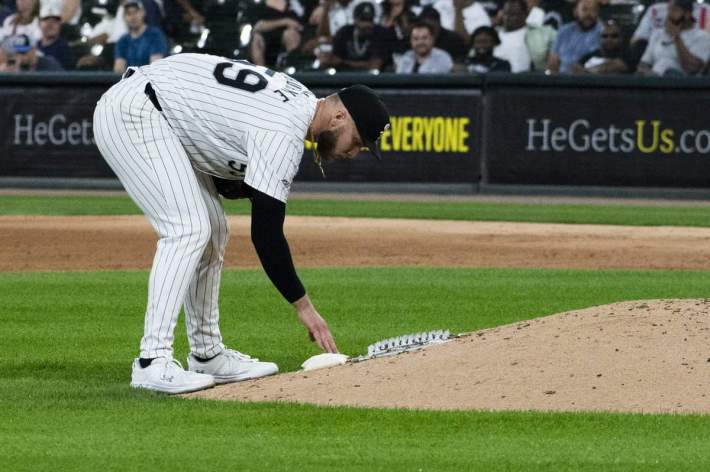
Sean Burke
Over 233⅓ minor league innings, Burke sports a 5.05 ERA. Over 19 major league innings, it’s a 1.48 ERA. This helps explain how his September star turn snuck up on everyone, but even that oversimplifies it. Viewed as a proven college performer out of the draft, Burke made all of 16 outings below Double-A, with some of those being rehab outings being for a shoulder that’s kept him from being in top form for much beyond the last two months of the 2024 season. With plenty of velocity, length and spin talent, Burke has always missed bats, but health, health-related delivery inconsistency and the lack of a changeup challenged if it would fit in a rotation. With a seam-shift changeup added last summer and his shoulder responding well to an anti-inflammatory injection the previous winter, a suddenly fully-former Burke appeared in Charlotte last August. For whatever warts lie below the pretty results against four offenses that had never seen him before, Burke pitched well enough to compete for a major league rotation spot in 2025. With Drew Thorpe already dealing with a setback, it’s basically Burke’s job to lose.
Tim Elko
Most discussion of Elko in this space has centered around feeling a sense of professional responsibility to dump cold water on a feel-good story. Elko has substantial contact issues, both in-zone and of the chase variety, that cast serious doubt on how much he’d be able to control a strikeout rate that is already on the outward bounds of acceptability in Triple-A. If Andrew Vaughn’s seat is hot, it’s not for Elko-specific reasons. But it’s not like it’s a mystery what the fuss is about. Elko hit a ball 114.7 mph in Triple-A last year alongside a gaudy 48 percent hard-hit rate. Make a mistake to him, and he will make it look very pretty in ways the pitcher did not intend. After a literal build the statue hero turn at Ole Miss, Elko was a fifth-year senior who signed for a five-figure bonus and has balanced his obvious strengths and obvious weaknesses sharply enough that a big league cup of coffee feels more likely than not, which is cool.
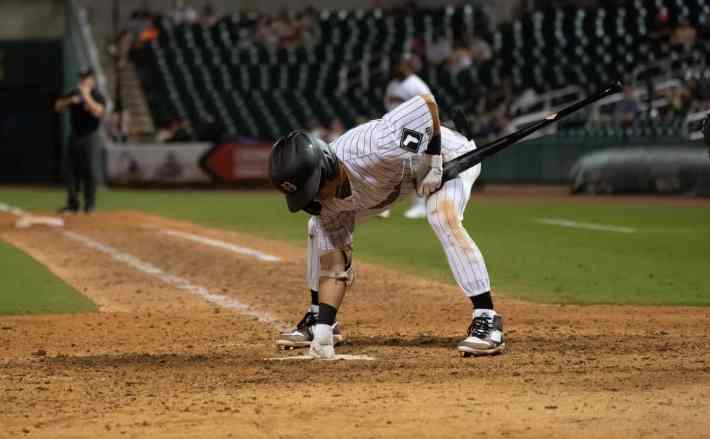
Rikuu Nishida
But we’re not done talking about players who have overachieved to the point that they unwittingly invite the wet-blanket treatment for their major league potential. A hard-hit rate of half the minor league average and a 90th percentile exit velocity shy of triple digits are the nerd numbers that place Nishida in a population of soft-contact types where only a small handful of strikeout-avoidant major league regulars reside. Sal Frelick was the only qualified big league hitter with a sub-20 percent hard-hit rate last season, and the struggle to tolerate a ~.350 slugging percentage for someone who can’t man center or short is an issue Nishida would also face in Chicago. To be even more joylessly realistic, Nishida’s contact quality is more reminiscent of David Fletcher, who has a 3 WAR major league season under his belt, but was trying to get back to the majors by throwing a knuckleball at age 30 last year.
This is the sort of scrutiny someone earns when they score a minor-league-leading 114 runs and reach base at a .418 clip over 127 minor league games, undeterred by the two promotions in the process. It might be safer to find a usable role player deep in the draft by betting on a player to over-perform a collection of average-ish tools (see: Baldwin, Brooks) than someone like Nishida, whose contact and power ability scores are at extreme opposite ends from each other. But Nishida is easily more fun, has already lent his chaos to a Southern League title, and is in the right org for exploring a tricky path to being a productive hitter. If Nishida was able to replicate Fletcher's 2019 even once, it would be enough joy to last a lifetime.
PERTINENT: Rikuu Nishida hopes to power up
Fraser Ellard
Although Ellard signed for $20,000 in the eighth round as a senior signing out of Liberty University in 2021, the White Sox signaled higher aspirations for him throughout his climb up the minors. They promoted him aggressively despite elevated walk rates, then gave him time in the Arizona Fall League after missing months of the 2023 season. His success in the desert put him on the map, and he fared well enough in Charlotte that when the Sox traded their best relievers at the deadline, Ellard got the call to fill a seat the rest of the way. He survived a very nervous debut and fared respectably afterward, posting a 3.75 ERA with 26 strikeouts against 30 baserunners over 24 innings. He handled righties far better than lefties all season, which is both a testament to the efficacy of a new cutter, and a call for either a different fastball against lefties, or for more confidence in throwing a slider while behind in the count. The arm plays though, and while he can’t quite be called a fixture in the White Sox bullpen, he has the inside track among lefties.
Peyton Pallette
After 34 professional starts of wondering how long a post-TJ grace period is supposed to last, Pallette moving to the bullpen, thriving (Southern League hitters managed .155/.238/.183 against him), and vaulting himself up to a likely 2025 debut feels cathartic. But an overslot second-round pick becoming a big league reliever and Pallette’s prospect stock will not reflect how much of a victory it felt like unless he matures to elite production in his new role. Ratcheting up to 95-98 mph in short bursts definitely helps, and clearly has boosted the performance of Pallette’s changeup. But his fastball shape remains unremarkable and despite its beauty, pro hitters have been disinclined to chase his big overhand curveball, which seems to pop out of his hand. Palette pitches with big-time emotion and recovers well from short usage, so it seems like the White Sox have found the right home for what was always big league level talent. He’ll need another big stride to become a core piece.
Palette’s compatriots among relief prospects who could pop to Chicago in 2025 are more of the one weird trick variety. Eric Adler has a bendy high-80s slider but suspect control. Zach Franklin does have exceptional fastball shape, which seems to drive his disinterest in throwing different pitches.
Riley Gowens
Nicky Lopez is headed to Cubs camp, Braden Shewmake has been DFA’d twice this winter, Michael Soroka is in the Nationals rotation, and Jared Shuster’s swingman status is tenuous when the farm system’s strength is upper-level starting pitching. Despite being a 25-year-old who hasn’t reached Triple-A yet, Gowens might be the last best hope for lasting impact from the Aaron Bummer trade. The Libertyville native is a big fella (6’4”, 225 pounds) and his arm stroke stays tucked behind his right shoulder long enough that he gets a strange amount of whiffs on elevated low-90s heaters from an approach angle that’s on the flatter side. Gowens picked up the slack as promotions decimated the Barons rotation in the second half, but a standard-issue fastball/slider righty reliever feels like a reasonable goal here.
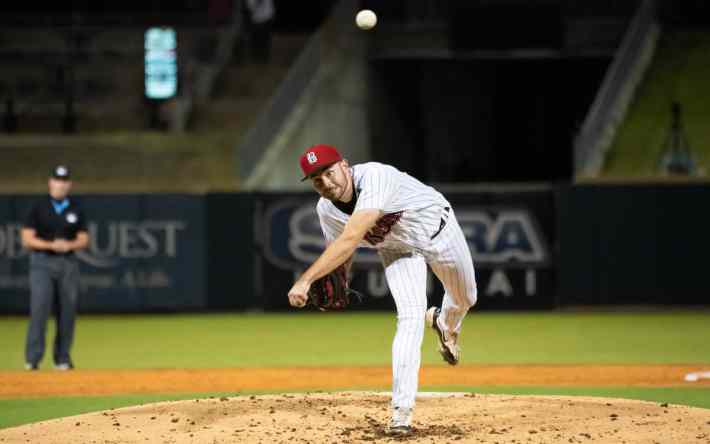
Tyler Schweitzer
If the answer weren’t directly above this sentence in large font, the question “Who threw the most minor-league innings for the White Sox in 2024?” might have you guessing. Schweitzer led the system with 132 (although Jairo Iriarte tied him in total innings when counting the six he threw out of the White Sox bullpen in September), and he reached that impressive total thanks to increased efficiency. Control issues in Winston-Salem cast doubt over his profile last year, but he managed to slash his walk rate a couple points (9.7 percent to 7.4) from 2023 to 2024, and nothing else suffered. After nine respectable starts with the Dash, the White Sox promoted him to Birmingham after Drew Thorpe’s MLB call-up, and largely speaking, he looked no worse for the wear, finishing with a 4.17 ERA and 89 strikeouts against 27 walks over 86⅓ innings.
You might not hear his name often because nothing stands out. He’s a 6-foot lefty with a low-90s fastball, his slider and curve can blend into each other, and the changeup isn’t great, which makes him vulnerable to righties. But he moves pitches around well and is able to mix up sequences if Plan A isn’t working, which is how he’s able to complete five-plus innings more often than not. That makes him a helpful presence in a minor-league rotation at the very least, and if he could get a little bit more out of any secondary pitch, he’d be able to raise his ceiling.
Aldrin Batista
Logic says that If Batista was some sort of ace-in-waiting, the Dodgers wouldn’t have sloughed him off for IFA pool room a year and a half ago, and evaluators would take more note of the 21-year-old gliding through both levels of A-ball (2.93 ERA in 110 ⅔ innings). But being too polished for the raw offensive approaches that populate those leagues beats the alternative. Batista starts his wind-up by swinging his front leg closed before driving forward, and his east-west inclinations never stop after that. The Dominican right-hander tries to bore his running sinker on the hands of righties at every level of the strike zone, his slider bends the other direction in concert, and when his changeup gets involved, armside fade is the driving force. While Batista touched 95 mph last season and has room to add onto his stringbean 6-foot-2-inch frame, competent and confident execution rather of his attack plan – rather than gaudy weapons – is the carrying trait for now.
Among other results-based arms, Lucas Gordon, selected out of Texas in the sixth round in 2023, is a Schweitzer-like guy to watch, in the sense that he posted a 2.23 ERA over 113 innings between Kannapolis and Winston-Salem, but nibbled too much to make it projectable (61 walks against 98 strikeouts). Like Batista, Jake Peppers throws with his right hand, but his strike-throwing improved drastically over the second half in Kannapolis, so perhaps something clicked.

